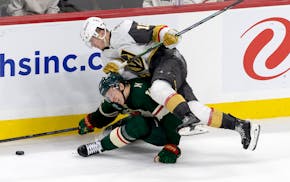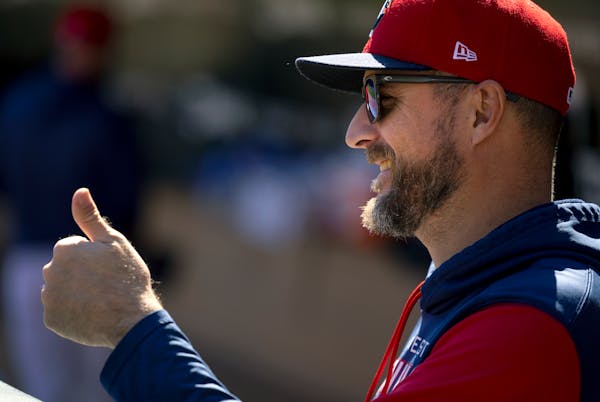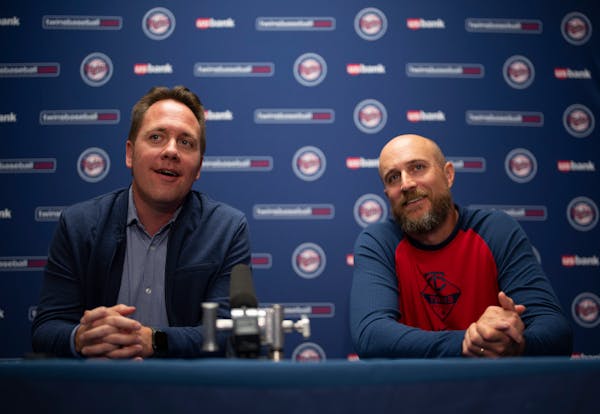The Twins home season ended Thursday with the lowest total yearly attendance in Target Field history, with the exception of the pandemic-impacted years.
Just 23,397 came out Thursday to see the Twins — officially eliminated late Wednesday from the postseason — lose to the White Sox 4-3. Chicago's victory ended its eight-game losing streak and put the White Sox a game ahead of the Twins for second place in the American League Central.
And there were plenty of empty seats to witness that, despite the sunny fall afternoon.
The Twins had a total attendance this year of 1,801,128, ranking 20th of 30 MLB teams. When Target Field opened in 2010, it drew its largest total of more than 3.2 million. There were no fans during the pandemic-shortened 2020 season. And 2021 drew just north of 1.3 million, though there were limits on capacity for half of that season, including starting off with only up to 10,000 fans.
Before the pandemic, the Twins averaged about 30,116 fans per game. This year, that dropped to 22,236.
"I'm surprised and kind of bordering on disappointed that we haven't drawn better the second half of the season," said Dave St. Peter, the Twins' president and CEO. "... The way we played coming out of the gate, we got off to a good start, and I fully expected our attendance to jump more than it did.
"It did jump, but it didn't jump to the level that I had hoped, which would have been back to pre-pandemic, maybe 2019."
St. Peter cited a few reasons for the drop. First was the lockout, which put ticket sales behind since people were less inclined to buy when they didn't know when — or if — the season would start. Signing big free agent Carlos Correa did help bump that up in the final two weeks of March.
The Twins are looking at everything from how they are marketing the team to ticket pricing to reaching out to different communities to bring in new fans. But St. Peter said some parts of the problem are out of his control.
One is the economy, with inflation after the peak of the pandemic making it harder for people to spend on luxuries like entertainment. Another is the "narrative around public safety" in the Twin Cities, as St. Peter put it, with many still wary of coming to downtown Minneapolis after the unrest stemming from George Floyd's murder in 2020 and a recent uptick in violence.
St. Peter said he isn't aware of any fans having safety issues when coming to or from a Twins game in the past two seasons.
"I want to be clear on this: I'm not suggesting public safety is an excuse on where our attendance is," St. Peter said. "It's a factor, but I'm not suggesting it's the one we're going to hope and pray gets better. We need to do our part of doing a better job connecting with the fan base."
Thursday's game was won on Jose Abreu's RBI double in the eighth, which broke a 3-3 tie. It came after Twins second baseman Nick Gordon botched a fly ball for a two-base error.
Gordon had a two-run double in the first, but the Twins didn't score again until Ryan Jeffers' squeeze bunt in the sixth tied the game at 3. Before that, the White Sox scored on Romy Gonzalez's RBI triple and Mark Payton's RBI single, both in the third, plus Andrew Vaughn's sacrifice fly in the sixth.
Luis Arraez of the Twins was 2-for-4, meaning he leads the AL batting race at .315 with the Yankees' Aaron Judge idle at .313 as he chases the Triple Crown. Arraez said he feeds off the crowd's energy and has noticed on road trips to Chicago how attendance seems more robust there.
But Twins manager Rocco Baldelli said his team is responsible for drawing more people to the stands. While the Twins were better at home (46-35) than away (30-45) this season, they botched their playoff chances, which certainly hurt late-season attendance.
"When you play good, people get behind you," Baldelli said. "That's our goal is to go out there and play better when we get back here to Target Field next season."
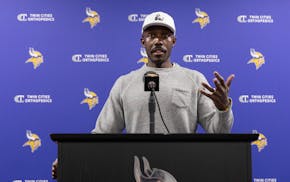
Analysis: Vikings' small draft class fits neatly into the general manager's big plan
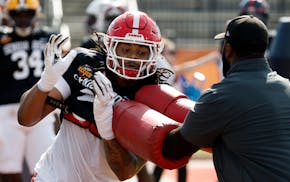
Vikings see untapped potential in fifth-round pick Tyrion Ingram-Dawkins

Meet the Vikings' 2025 draft class

Wild overtime: Takeaways after Vegas rallies and ties playoff series with OT victory
